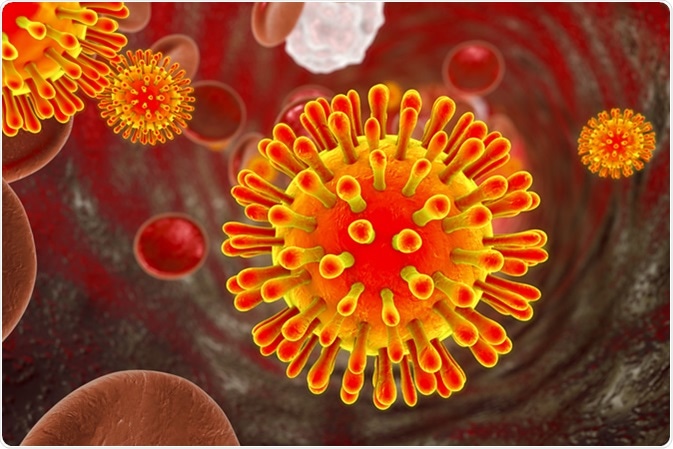Chancroid is the name for the acute, ulcerative process caused by a facultative anaerobic bacterium Haemophilus ducreyi. It occurs on the anogenital area and is usually linked to obvious, suppurative and massive lymphadenitis (also known as “bubo”).
Research has repeatedly shown that individuals seropositive for human immunodeficiency virus (HIV) have increased numbers of ulcers caused by Haemophilus ducreyi. Such epidemiological synergy between HIV infection and chancroid basically represents a two-way street, where these pathogens can influence each other’s transmission patterns.
Furthermore, in a large number of countries with high rates of HIV-infection chancroid is the most frequent cause of genital ulcer disease, with strong associations between these two diseases. Conversely, chancroid is rarely observed in countries that have low rates of HIV-infection.
Effects of Chancroid on HIV Susceptibility and Transmission
Chancroid is shown to facilitate HIV transmission by increasing the susceptibility to viral infection, but also the infectiousness of HIV. One of the most prominent predispositions is when genital ulcer bleeding occurs during sexual intercourse, which potentially increases viral shedding and subsequent HIV infectiousness.
Increased shedding of HIV from ulcer exudates into the genital tract has been evidenced in studies that observed prostitutes from Kenya and Cote d’Ivoire. Female sex workers with HIV that also harbored cervicovaginal ulcers had significantly higher HIV isolation rates from cervicovaginal fluids when compared to those without any ulcer disease.
In men with chancroid there is an increased concentration of HIV in seminal fluid, particularly in those presenting with non-gonococcal urethritis. This finding is ascribed to an increased viral load in blood that stems from systemic activation of the immune system by Haemophilus ducreyi.
The induction of the cellular immune response is also responsible for an increased presence and activation of T-helper cells, macrophages and other HIV-susceptible cells in early chancroid lesions, but also in the edges of already established ulcers. Specific HIV-receptors (CCR-5) are also up-regulated on macrophages, subsequently increasing their susceptibility to HIV invasion.
Moreover, invasive diagnostic and/or therapeutic techniques used for chancroid may also result in HIV spread. Some of those include aspiration and drainage of bubos, especially if unsterilized blades and other equipment are used for multiple subjects.

HIV (AIDS) viruses in blood with red blood cells and white blood cells. 3D illustration. Image Credit: Kateryna Kon / Shutterstock
Effects of HIV on Chancroid
It is well-established that HIV can alter the clinical pattern of chancroid by extending the Haemophilus ducreyi incubation period, as well as by increasing genital ulcer count. Regarding the latter, it has been shown that ulcers in these individuals heal deficiently and very slowly. In addition, a plethora of extragenital sites are affected with ulcers (most commonly the anus, hands, mouth and the thighs).
Concomitant HIV infection can also significantly affect the success of chancroid chemotherapy, which means protracted healing and more common treatment failures. This may in turn result in grave complications, such as massive bleeding and penile amputation. HIV patients with Haemophilus ducreyi are more likely to present with serpiginous and giant genital ulcers.
Therefore, individuals with immunosuppression (which is a consequence of HIV) that are confronted with treatment failures should be monitored closely, as single doses of either fleroxacin or ceftriaxone are usually not effective. Serologic tests for HIV should be pursued routinely – not only at first contact, but also after a window period of three months.
Further Reading
Last Updated: Feb 26, 2019